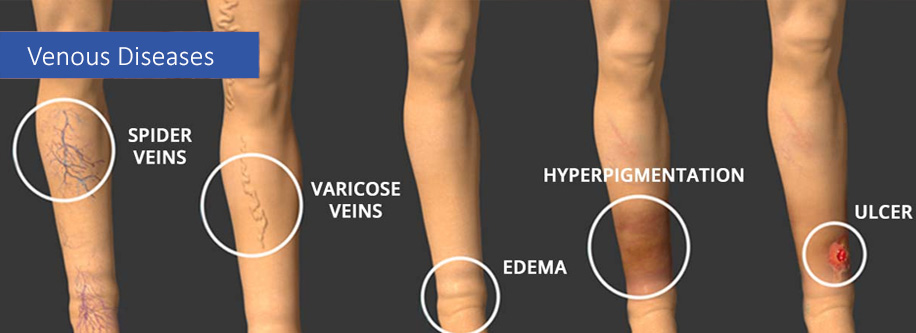The concept of chronic venous disease of the lower limbs includes: a full range of morphological and functional disorders of the venous system, which are manifested both visually and symptomatically.
Venous Diseases
Chronic venous disease of lower limbs
Symptoms
- Pain
- Burning and heaviness
- Muscle cramps
- Itchy skin
- Tension
- Feeling of heaviness and fatigue
- Edema and restless legs syndrome
- Transient lameness of venous origin
- Cosmetic defect
Visual Signs
- Spider-like venous network
- Edema and skin manifestations such as pigmentation
- Lipodermatosclerosis, dermatitis and ulcer
- The presence of varicose veins
The Cause and Mechanism of the Development of Venous Disease
Chronic venous disease affects about 60-70% of the adult population, especially it progresses with increasing age, although in recent years there has been a rejuvenation of the disease and it is especially pronounced in the spring-summer period.
There are many reasons and mechanisms for the development of chronic venous disease of the lower extremities, such as:
- Family predisposition
- Female gender
- Age
- Pregnancy
- Inactive lifestyle
- Orthostatic/prolonged sitting
- Excess weight
- Hormonal imbalance
Due to the fact that chronic venous disease progresses continuously, its timely and adequate accurate diagnosis and treatment are very important.
Otherwise, There is a Risk of a Number of Complications
Complaints are Increasing
Heaviness, burning, pain, fatigue and swelling.
Occurrence of Trophic Ulcer
Which especially lowers the quality of life.
Skin Pigmentation
Inflammation of the Vein Wall and Formation of a Blood Clot in it
A Wide Range of Treatments
In accordance with the wide spread of the mentioned disease, a wide range of treatment has been developed, starting with general recommendations and introducing a healthy lifestyle, ending with various mini-invasive interventions (sclerotherapy/laser ablation) and surgery. However, it should be noted here that 70% of patients do not require any intervention.


